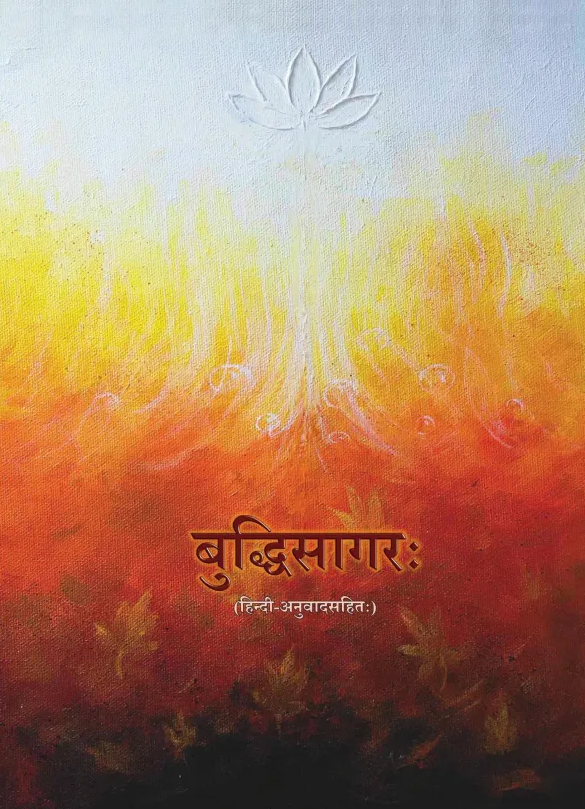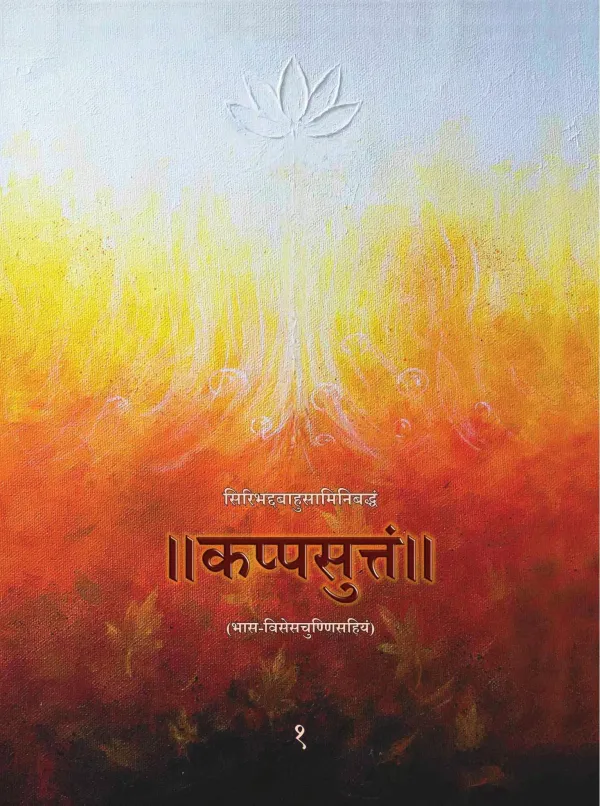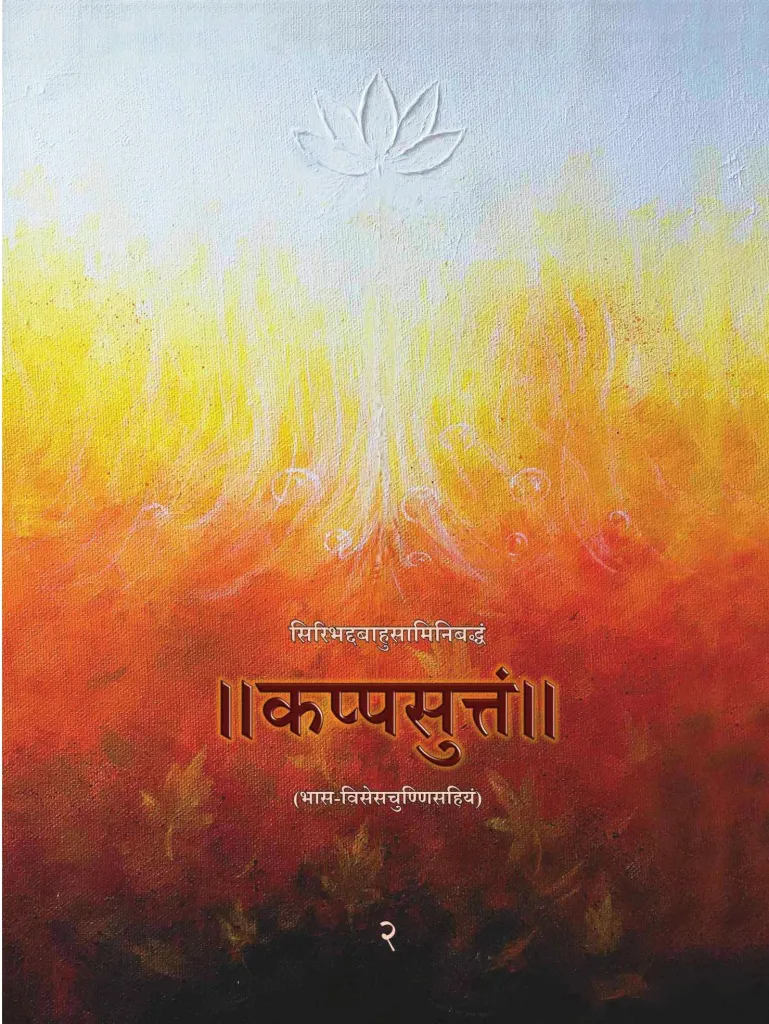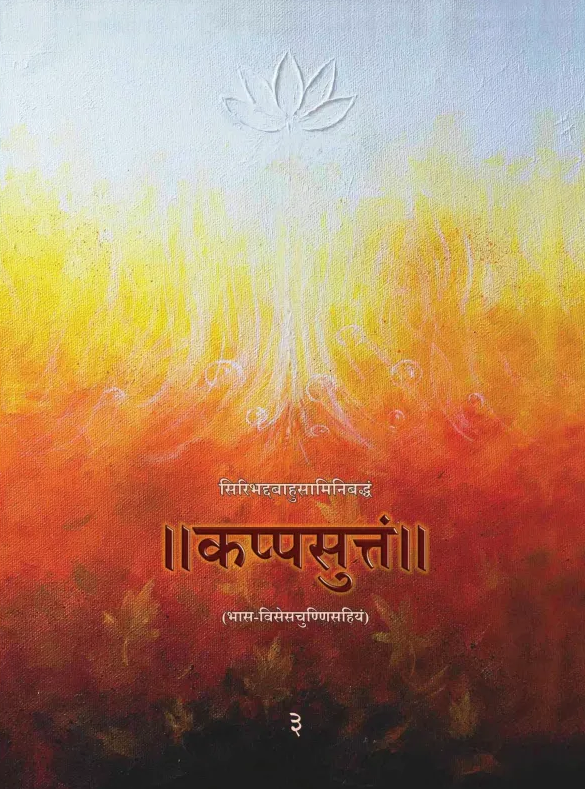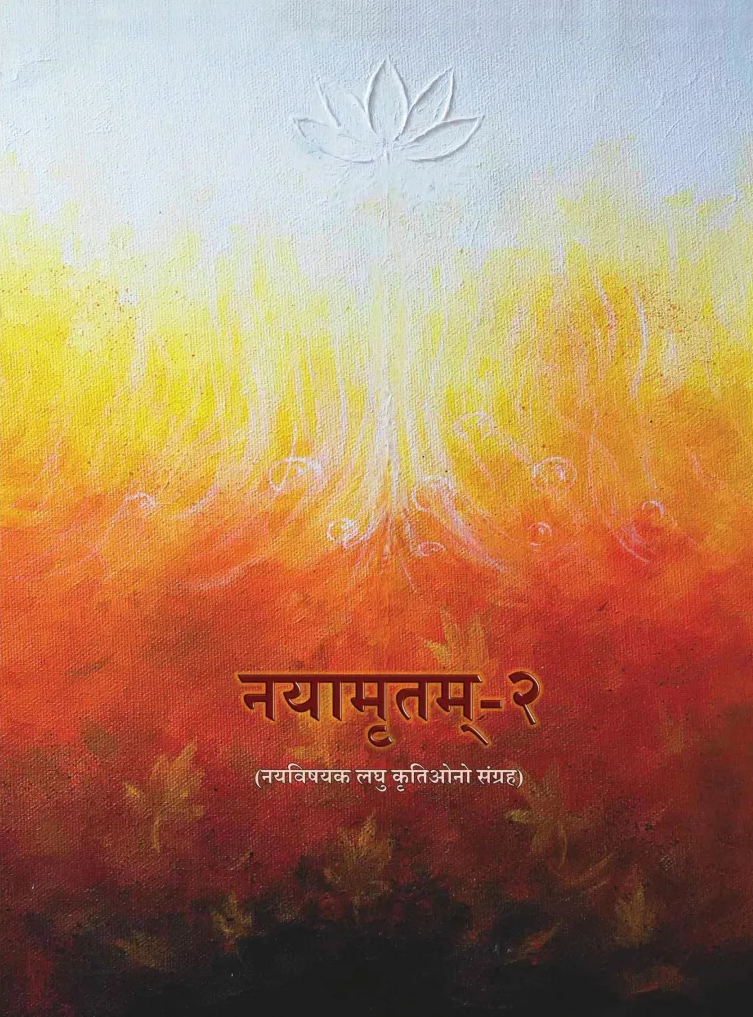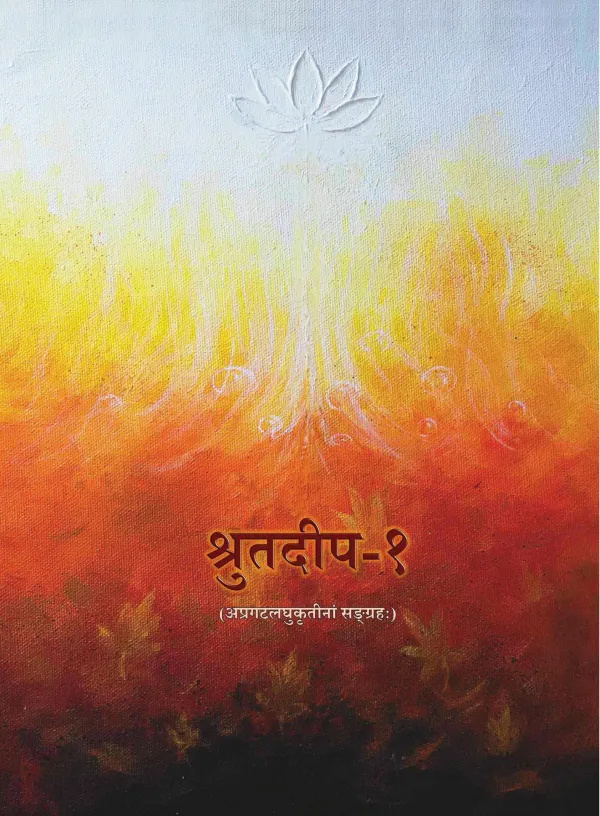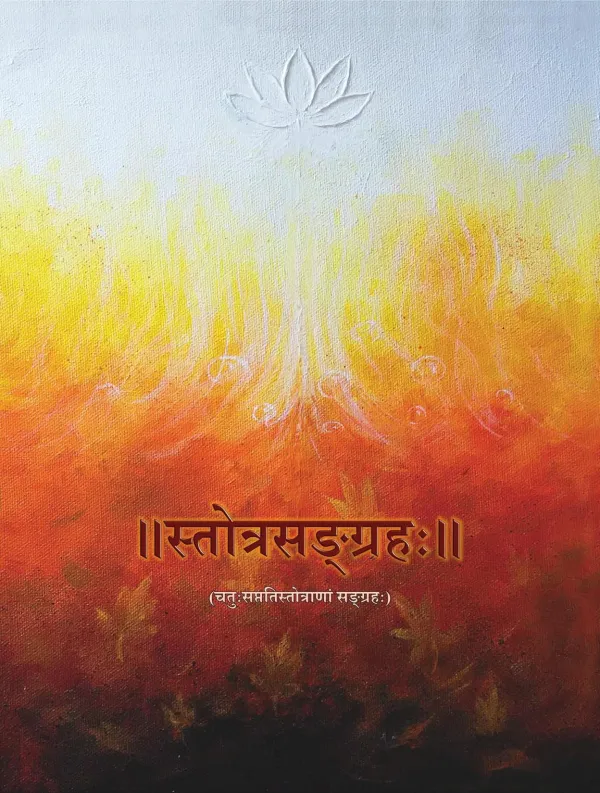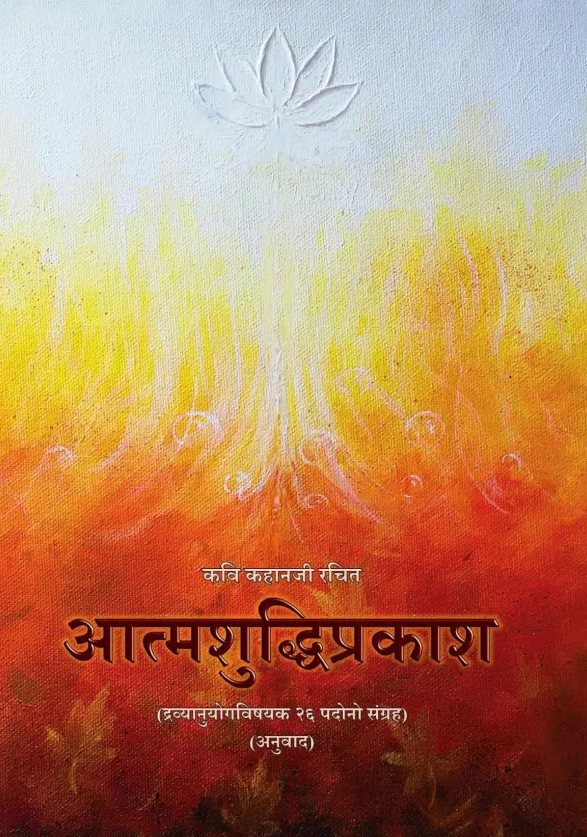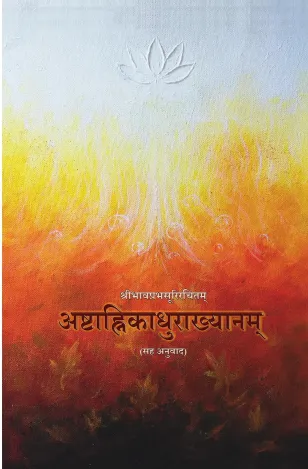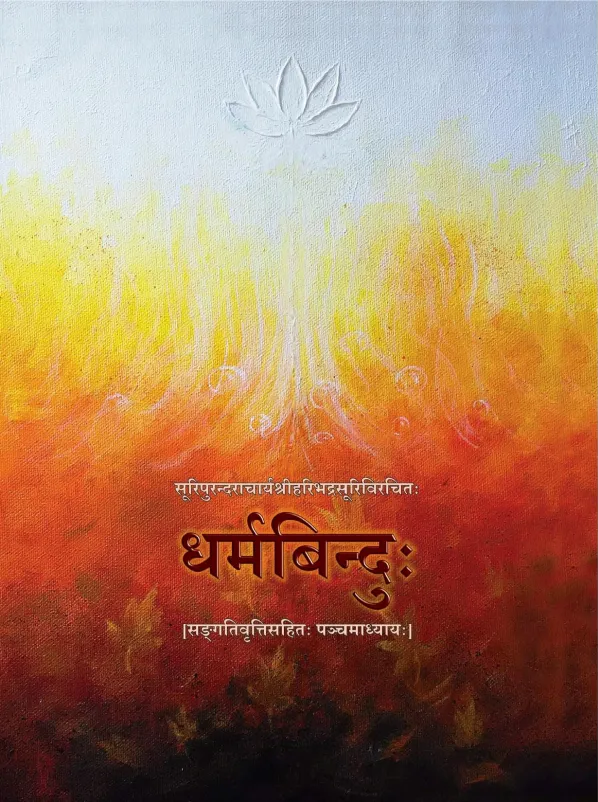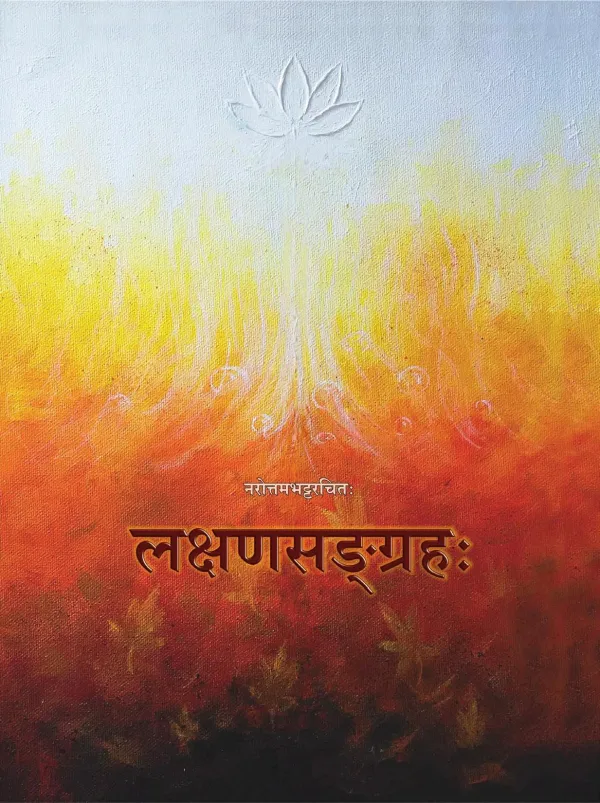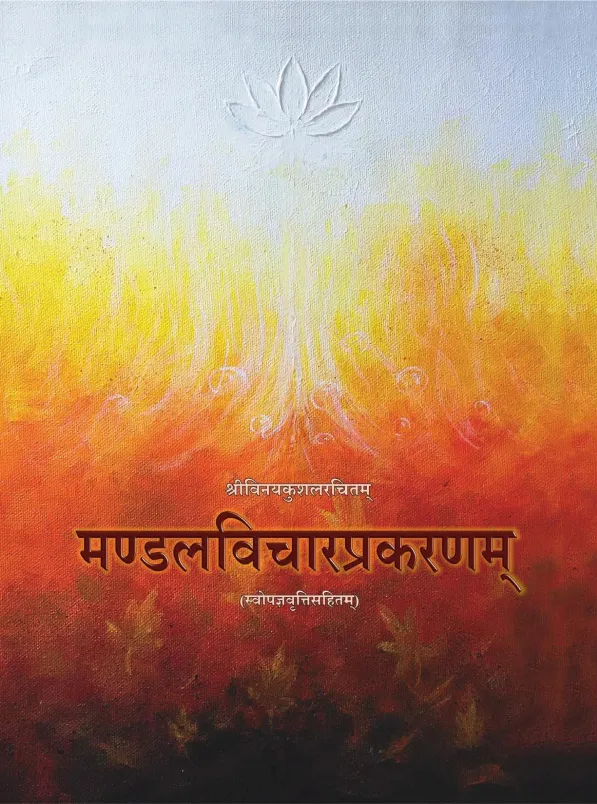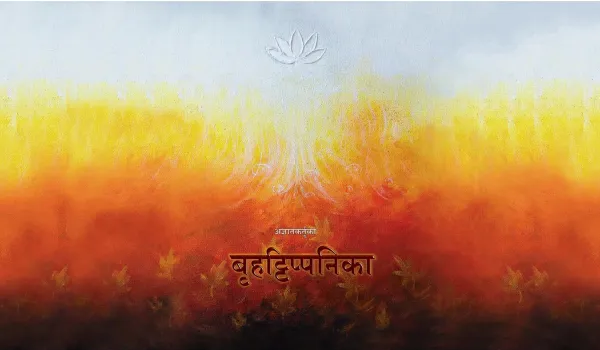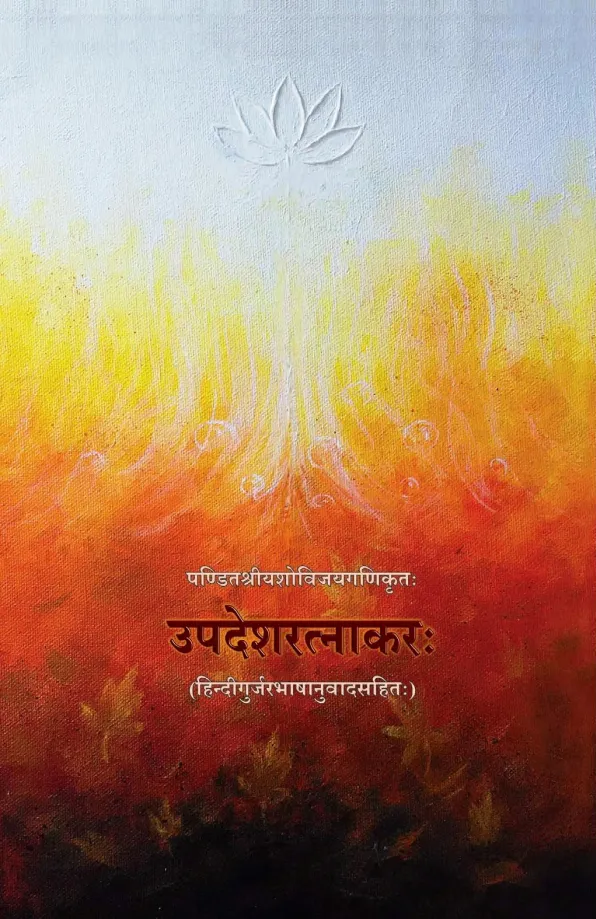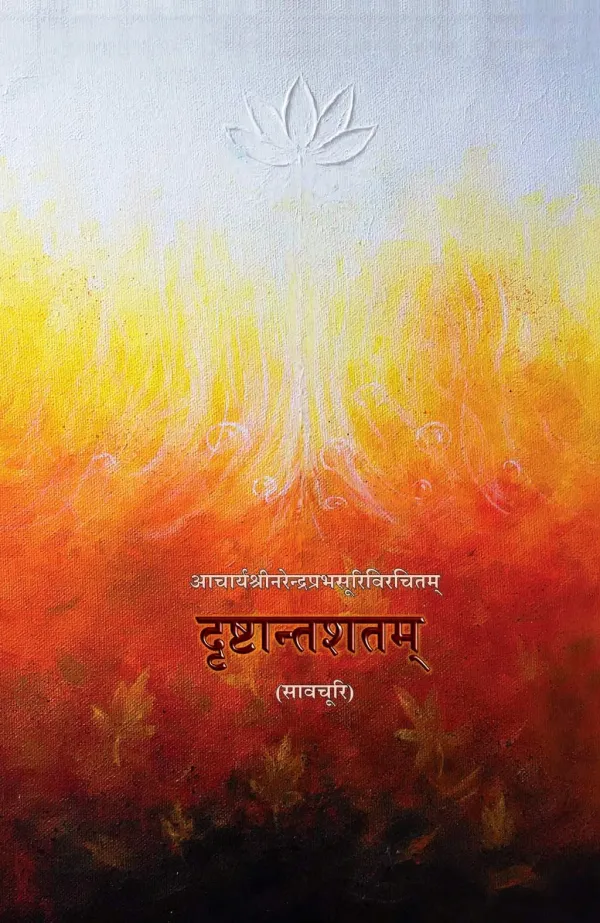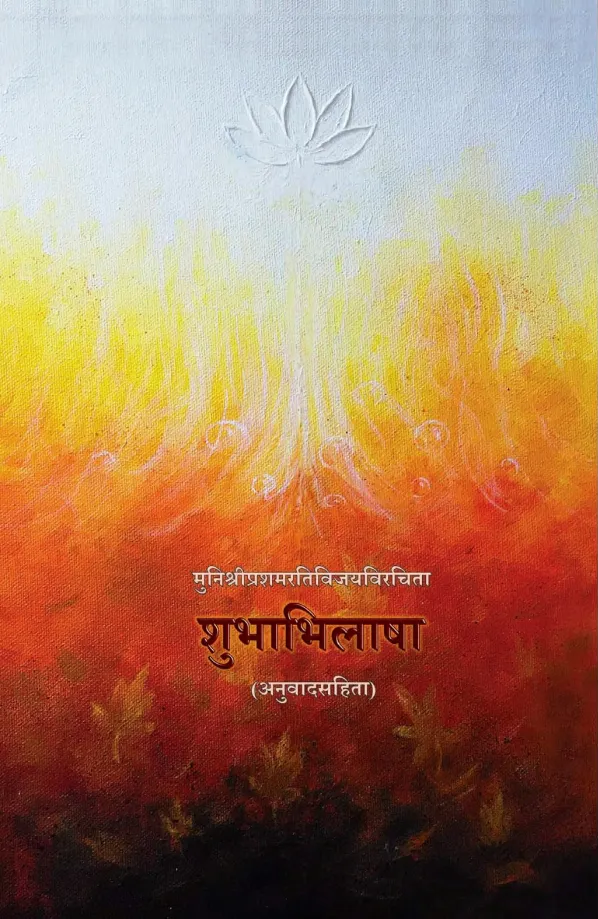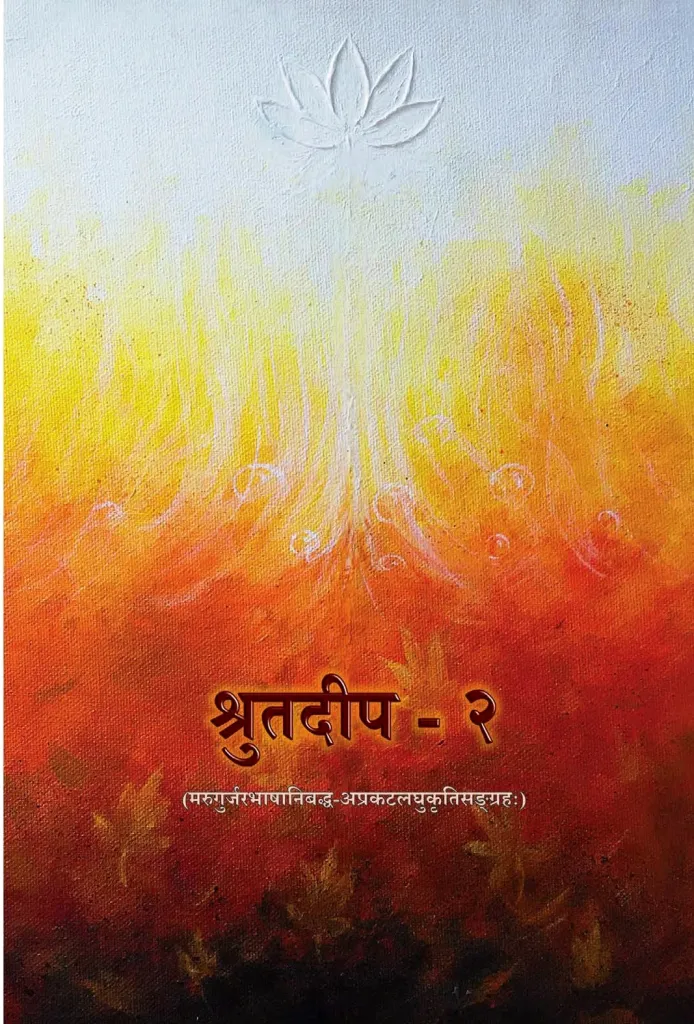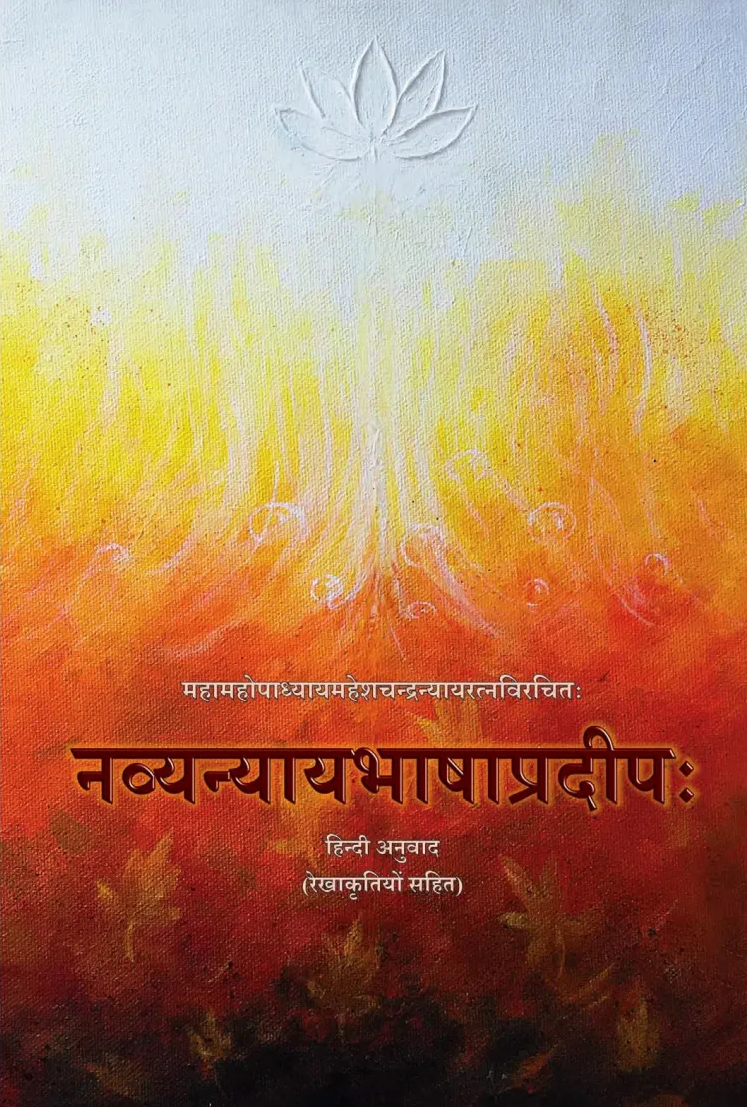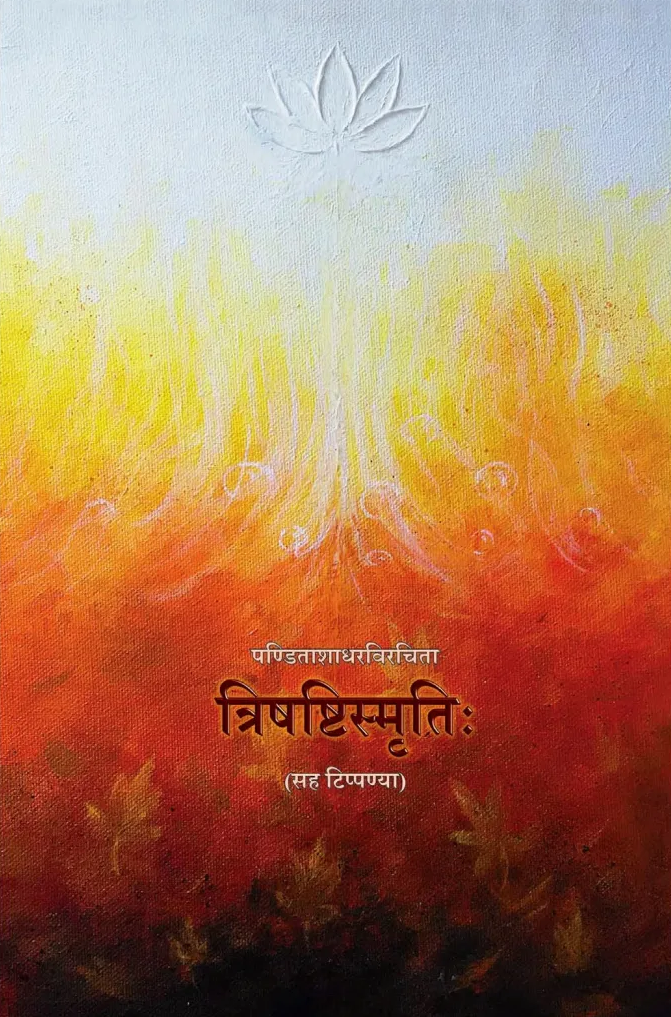PrashamRati Prakaran
प्रशमरतिप्रकरणम्
This is a treatise written by Acharya Umaswati, the author of the Tattvartha Sutra. The text consists of 314 Aryas.
The text has equal balance of tatvagyan, manobhav and pariniti. There are 3 commentaries on it. The author of the first commentary is unknown, the second one is penned by Acharya Haribhadra Suri. The third one is a short commentary.
This publication contains all these commentaries with the main text. The oldest manuscript used for this edition is almost 700 years old.
Sarva Siddhanth Stava
सर्वसिद्धांतस्तव:
This work contains only 45 verses and offers praise to 45 Aagamas. This is composed by Acharya Jinprabha Suri of Khartar Gaccha. He composed 700 stotras.
This stotra is in Sanskrit language. It is composed in various Sanskrit meters. There is a short incomplete commentary on it which is also printed here.
Kalpa Niryukti
कल्पनिर्युक्ति:
This is an Aagamic text. Kalpasutra is read during the Paryushana Parvan. The last sermon of Kalpasutra has a description about the rules to be followed by ascetics during chaturmas. The first explanation of the Aagam’s is given in the form of niryukti. The Kalpaniryukti is composed by Acharya Bhadrabahu Swami.
It contains 119 Prakrit gathas. This Niryukti has an ancient churni in Prakrit and a short Sanskrit commentary compiled by Acharya Manikyashekhar Suri. The present edition contains original text with both the commentaries, Sanskrit chaya and Hindi translation of the gathas.
The short Sanskrit commentary has been published for the first time.
Manaha Sthirikaran Prakaran
मनःस्थिरीकरणप्रकरणम्
This treatise is created by Acharya Mahendrasingh Suri of Anchalgaccha in Vikram Samvat 1284. The original text is in 170 Prakrit gathas. It deals with the theory of Karman.
It explains the theory with regard to the 14 types of ‘Jiva’. It depicts a very difficult and a non-interesting subject in a very interesting form.
The oldest manuscript of this text is a palm leaf manuscript deposited in Shri Hemachandracharya Jain Gyanbhandar, Patan. This manuscript is estimated to be from the 14th century.
BhavBhavna Avchuri
भवभावनाप्रकरणम् अवचूरि
It was written by Maladhari Acharya Hemachandra Suri in the 13th century. It has 531 gathas in Prakrit language. He himself has written a commentary on it.
Samsaar bhavana (desire for worldly life), one of the 12 bhavanas is described in detail in this treatise. The illustrations are in Prakrit language and in detail. A short Sanskrit commentary with every illustration in brief is been published for the 1st time.
The only copy is received from the Bhandarkar Oriental Research Institute.
Darshanik Prakaran Sangrah
दार्शनिक प्रकरण संग्रह
The 8th-16th century of Vikram Sanvat were the centuries of debates. The Pandits and Sadhus of every religion used to hold discussions and debates in the King’s courts to prove the facts of their religions. The one who used to loose used to get punishment and had to leave the kingdom.
To maintain the prestige of their religion one had to be an expert in debating. It is mentioed in Kalpasutra that 600 disciples of Lord Mahavira were expert debaters. The acharyas expert in debating had received a position in top 8 effective people. Examples are Mallavadi Surishvarji, Vadidevsuri etc.
In a debate different strategies and ideas have to be used. The Acharya bhagwants have created few granths which include the counter strategies to be used durig a debate. These debates remain unpublished as a single Prat has 22-25 debates and only a single debate is known. The index of these granths have no information about such petagranth.
42 years ago a scholar named Shri Naginbhai Shah had published books based on 10 debate topics on behalf of Sanskrutik Vidyamandir. The 2nd part of it is being published after 42 years under the supervision of Upadhyaya shri Bhuvanchandra maharajsaheb of Paychand Gachcha.
SyadVad PushpaKalika
स्याद्वादपुष्पकलिका
This text is written by Charitranandi of Kharatar Gaccha. It is based on the 17th century text Naychakrasar, written by Devchandra in Sanskrit and Gujarati.
The Syadvadapushpakalika discusses the concept of dravyanuyoga. The 11 muladvaras of the 6 dravyas is the center of discussion.
The present edition contains the main text with the commentary written by the author himself. The Nayachakrasara of Devachandra with a Gujarati commentary is also given in the appendix.
Yog KalpaLata
योगकल्पलता
Most of the Jain literature has been written by Jain monks. Very rarely common people have written any treatise.
Yogakalpalata is one of such rare works. It is a collection of 11 small compositions of Mr. Girish Kapadiya. These are very modern works written in Sanskrit. These are published with Hindi translations.
Muktivada
मुक्तिवाद:
This is a non-Jain text. Pandit Gadadhar Bhattacharya is the author of the text. The text discusses the concept of moksha in the light of navya nyaya philosophy. The views of various other philosophical traditions are examined here as well. The present edition contains original text with a translation in Gujarati language, which is done by Ganivarya Vairagyarati Vijayji.
DownloadVyaptiPanchak (English)
व्याप्तिपंचक
This is treatise on nyaya philosophy, written by Gangesha. It has 3 commentaries on it, namely Mathuri, Didhiti and Jagdishi. Late Dr. Baliram Shukla, the teacher of Pujya Ganivarya Vairagyarati Vijayji, had translated those into English. The present publication contains the original text with the same commentaries and their English translations. DownloadPrakrit Vyakaran
प्राकृत व्याकरण
Grammar plays an important part in the understanding of a language. Acharya Hemachandra wrote an extensive treatise on grammar of Sanskrit and Prakrit languages. His Prakrit grammar became very popular and has been referred to by scholars throughout centuries.
According to the need of the time, Late Dr. Keshav Vaman Apte, who was professor in the Willingdon College, Sangli, translated the same in Hindi. This translation was published and made it easy for the students to learn Prakrit languages in India. He translated the same in Marathi as well. But he could not get any publisher to publish this Marathi translation.
When the authorities at Shrutbhavan Research Center came to know this thing, they understood the importance of the book and published it gladly.
ArdhMagdhi Vyakaran
अर्धमागधी व्याकरण
This publication tends to describe the grammar for Ardhamagadhi language. Since there is no separate treatise on Ardhamagadhi grammar by ancient grammarians of Prakrit languages, this book has its unique place in the academic world. The author has taken meticulous efforts to explain the grammar.
The language of Shvetambara Jaina Aagama texts is Ardhamagadhi. Though the grammars of various Prakrit languages are available, the detailed grammar of Ardhamagadhi was not available yet. Late Dr. Keshav Vaman Apte, who was professor in the Willingdon College, Sangli, wrote a thesis explaining various rules of Ardhamagadhi language with examples from Aagama texts.
It is written in Marathi. Realizing its importance, Shrutbhavan Reasearch Center has published this book.
Buddhisagar
बुद्धिसागर:
In Sanskrit literature, a large amount of treatises have been written on ethics. This is one of such treatises. The Buddhisagara written by Sangram Singh Soni is rich in various aspects. Along with ethics, many other topics have been discussed in this book. In order to prepare an edited text of this book, after studying all the manuscripts available in various manuscript libraries, a universally accepted, revised and critical text has been finalized.
This book is important both at the religious and behavioral levels. The theme of the present book is universally useful and acceptable ethical preaching. So it has also been translated. Sangram Singh Soni, the author of this book, was a householder. There will be an important contribution in the history of Jain Sanskrit literature due to this publication.
For the present edition, a total of eight manuscripts have been used from the various manuscript libraries. Buddhisagara comes with a historical context along with moral exhortations. Sangram Singh Soni, the author of Buddhisagara, was a householder engaged in politics. Malwa was strategically the center of India in the then politics and Sangram Singh Soni was the chief of Malwa. The preface of this edition consists of articles corresponding to all these topics. An article titled 'मध्यकालीन भारत' enlightens the background of the text and the author. The historical and religious background of the author is reflected in the article 'संग्रामसिंह सोनी'. The introduction overviews the contents of Buddhisagara.
Kalpavishesh Churni - Part 1
कल्पविशेष चूर्णि - १
Chedasutras have an important place in the Aagamas of Jain tradition. The essence of the ethical culture is Shramana Dharma. For the accomplishment of Shramana Dharma, the practice of ethics is essential. The study of Chedasutras also becomes essential to understand the hidden secrets and subtle practices of ethics. The basic text of the Brihatkalpa is in prose form. There are 81 kalpas of dos and don’ts in this. All these kalpas are related to five samitis and five Mahavratas.
Sanghadas Gani composed a commentary consisting of 6000 verses on this sutra. In order to understand the difficult topics of Niryukti and Bhashya, Churni Granths with detailed explanation were written. Two important unpublished Churnis of the Brihatkalpasutra are found, namely, the Kalpachurni and the Kalpavisheshchurni. The Kalpachurni has 16000 granthagra and the second Kalpavisheshchurni has 10000 granthagra. Both these Churnis are still unpublished. The names of the authors of these Churnis are not available.
Kalpavishesh Churni - Part 2
कल्पविशेष चूर्णि - २
Chedasutras have an important place in the Aagamas of Jain tradition. The essence of the ethical culture is Shramana Dharma. For the accomplishment of Shramana Dharma, the practice of ethics is essential. The study of Chedasutras also becomes essential to understand the hidden secrets and subtle practices of ethics. The basic text of the Brihatkalpa is in prose form. There are 81 kalpas of dos and don’ts in this. All these kalpas are related to five samitis and five Mahavratas.
Sanghadas Gani composed a commentary consisting of 6000 verses on this sutra. In order to understand the difficult topics of Niryukti and Bhashya, Churni Granths with detailed explanation were written. Two important unpublished Churnis of the Brihatkalpasutra are found, namely, the Kalpachurni and the Kalpavisheshchurni. The Kalpachurni has 16000 granthagra and the second Kalpavisheshchurni has 10000 granthagra. Both these Churnis are still unpublished. The names of the authors of these Churnis are not available.
Kalpavishesh Churni - Part 3
कल्पविशेष चूर्णि - ३
Chedasutras have an important place in the Aagamas of Jain tradition. The essence of the ethical culture is Shramana Dharma. For the accomplishment of Shramana Dharma, the practice of ethics is essential. The study of Chedasutras also becomes essential to understand the hidden secrets and subtle practices of ethics. The basic text of the Brihatkalpa is in prose form. There are 81 kalpas of dos and don’ts in this. All these kalpas are related to five samitis and five Mahavratas.
Sanghadas Gani composed a commentary consisting of 6000 verses on this sutra. In order to understand the difficult topics of Niryukti and Bhashya, Churni Granths with detailed explanation were written. Two important unpublished Churnis of the Brihatkalpasutra are found, namely, the Kalpachurni and the Kalpavisheshchurni. The Kalpachurni has 16000 granthagra and the second Kalpavisheshchurni has 10000 granthagra. Both these Churnis are still unpublished. The names of the authors of these Churnis are not available.
Nayamrutam
नयामृतम्
The book 'Nayamrutam' was published by Pravachan Prakashan in Vikrama Samvat 2058 (2002 AD). It contains ten works introducing seven nayas. In fact, those are the parts of the main text. Each of these works is in Prakrit or Sanskrit language. In Vikrama Samvat 2071 (2015 AD), treatises in the ancient and modern Gujarati language were searched about the seven nayas. A lot of useful stuff was found. Based on that, a special compilation was prepared. This compilation consists of poems and prose treatises on nayas available in ancient Gujarati language and modern Gujarati language. This will clarify the doubts of those who want to study Naya.
The works are divided into four sections. The first section contains Sanskrit works. The second section contains lyrical Gujarati works. The third section contains prose works composed in ancient Gujarati. The fourth section contains treatises written in the modern Gujarati language.
Shrutdeep
श्रुतदीप
At Shrutabhavan Research Center, short works are edited for the purpose of research. These small works are collected in 'Shrutdeep'. These works on various topics have been edited and printed in this collection along with the introduction and translation.
There are about twenty works collected from the Sanskrit, Prakrit and ancient Gujarati language most of which are not published earlier.
Stotrasangraha
स्तोत्रसंग्रह:
It is a collection of 53 hymns. Stotra means praise of God. These hymns are composed in the Sanskrit, Prakrit and Apabhramsha languages. The hymns collected here are ancient and not published before. Based on this, by obtaining various manuscript copies, Param Upkari Param Pujya Acharyadev Shrimad Vijay Ramchandrasurishwarji Maharaja's disciple Pujya Gurudev Munipravar Shri Vairagyarativijayji Ganivar has prepared the edition with the help of scholars at Shrutabhavan Research Center.
In the Vikrama Samvat 2067, Shri Harshasagarji M.S. assigned the task of sorting 600 manuscripts in Agam Mandir, Pune to Shrutabhavan. Many unpublished works were found in it. One copy contained about 30 unpublished psalms. Also, many manuscripts of stotras were obtained from Shri Kailasasagarsuri Gyanmandir, Koba. Based on all these manuscripts, a collection of 53 stotras is published.
Aatmashuddhi Prakash
आत्मशुद्धिप्रकाश
This is a collection of 29 poems on the topic of dravyanuyoga. In these poems, topics like teaching of asceticism, padarthas of karmagrantha and devotion are explained in simple Hindi language. So it is an important masterpiece. The narrator is determined towards aiming at the purification of the soul. Hence the title 'Aatmashuddhi Prakash' of this collection makes sense.
These compositions are mostly unpublished. The Gujarati meaning of each poem is also presented here. Author of the text belongs to the Digambara sect.
Ashtahnika_dhurakhyanam
अष्टान्हिकाधुराख्यानम्
This work is also known as Paryushana Ashtahnika Vyakhyan. It is not published earlier. The author of this work is Acharya Shri Bhavprabhasuriji.
Kalpasutra is recited for the last five days in the Paryushanaparvan. For the first three days, lectures are delivered on the duty of Paryushana. Many works related to it are prevalent. In the lecture of Acharya Shri Bhavprabhasuriji, devotional worship is instructed, which is to be done in the eight days of Paryushana.
This is the uniqueness of the book.
In addition, abstinence from arambha, abstinence from ninda, abstinence from vikatha, and devotion towards ascetics has been preached. An example of Angarshi is given for the devotion towards preceptor. In this way, this work presents the various topics.
Dharmabindu
धर्मबिन्दु:
Daneshwari of Diksha Pujyapad Tapagachchhadhiraj Acharyadev Shrimad Vijay Ramchandrasurishwarji Maharaja gave a discourse on the fifth chapter of Dharmabindu in Hastagiri tirtha in Vikrama Samvat 2040. The revered master of agamas Acharya Shri Vijaya Mantungsuri M.S. requested to give a sermon on this scripture.
Pujyapadashreeji showered infinite grace on the community of ascetics by giving thorough interpretation of each and every sutra. Pujyashree's disciple respected Munirajshree Sanvegartivijayaji M.S. had written down this discourse. Honoured Munirajshree Prashamrativijayji M.S. edited the write-up. It is through this reading that one can get to know how the great men, who became world famous as the initiators of Diksha Yuga, were imparting good education to the Mahatmas who got initiated. Pujya Gurudev Munipravar Sri Vairagyarativijayaji Ganivar has translated these sermons into Sanskrit. Shrutabhavan Research Center has proudly published this innovative edition.
Lakshan Sangrah
लक्षणसंग्रह:
Lakshanasangraha of Narottama Bhatta is a precious work because it has collected nearly four hundred definitions of logical terms. This is being published for the first time by the Shrutbhavan Research Centre, Pune. Lakshanasangraha of Narottama Bhatta consists of almost four-hundred definitions of technical terms used in the systems of nyaya and navya nyaya. Narottama Bhatta has the basis of the sixteen categories of entities stated by the first Nyaya-sutra of Gautama. Therefore, the work deserves to see the light of the day. The laudable attempt to publish it by the ShrutBhavan Research Centre, Pune should be recognized by students and scholars alike.
Another important fact is, the Encyclopedia of Indian Philosophies as well as the New Catalogues Catalogarum are unaware of both, Narottama Bhatta and his work Lakshana-sangraha. This fact brings to our notice another fact that in spite of the attempts to record names of valuable works of ancient India, lying in the form of manuscripts, many works remain unknown and unnoticed by the compilers of different catalogues. It is many a time a matter of sheer luck that a scholar stumbles upon such a valuable work which is not noticed by anyone before. In its editorial, Munishree Vairagyarativijay Ganivar has nicely brought out the relevant points such as -
(1) Introduction to the work,
(2) Purpose of publication,
(3) Materials for the publication,
(4) Method of editing and
(5) Appendices.
The last among these i.e. the three Appendices added to the work are useful for referring to various definitions.
Mandalvichar Prakaran
मण्डलविचारप्रकरणम्
This is the publication of Mandalvicharaprakarana of Shri Vinayakushalji M.S. which has been edited with his own commentary. The subject of this book is orbiting of the Sun and the Moon around the mount Meru parallel to the Earth. A work called Chandrasuryamandalvichar composed by Shri Munichandrasuri is also popularly known as Mandalvichar. Shri Vinayakushalji has relied on this text as well for his work. This work is useful as well as not published before. So it has also been edited here on the basis of manuscript.
This book sheds light on Jain astronomy.
Brihat-Tippanika
बृहटिप्पनिका
This is a publication of the oldest manuscript catalogue. Brihat-Tippanika is a catalogue of Jain manuscript from various collections, compiled in the 15th century by an anonymous Jain monk. Amusingly, the methodology followed for cataloguing is similar to the methodology accepted by modern academic world.
This edition gives the original text of the catalogue with few important appendices that would be beneficial for the researchers in the field. This work is published twice before. It contains charts, which give information about names of texts, language, year of completion, number of verses etc.
Upadesh Ratnakar
उपदेशरत्नाकर:
It is a Prakrit composition of Yashovijayagani. This work is not published before. It contains verses advising moral conduct with examples. There are total 102 verses in it. The publication also contains Sanskrit, Hindi and Gujarati translations of the text.
DownloadDrustahant Shatak Sah Avchuri
दृष्टान्तशतम् (साह अवचूरि)
This is an edition with Hindi and Gujarati translations of a compilation of eloquent speeches (subhashita) based on two manuscripts. A Jain monk named Narendraprabhasuri compiled this collection about 700 years ago. The collection contains 121 subhashitas with short commentary (avachuri) advising moral conduct. This text is not published earlier.
DownloadShubhabhilasha
शुभाभिलाषा
This is a treatise explaining Jainism in simple language for laymen. It contains 108 verses in Sanskrit language. The verses are composed by revered Munishri Prashamarativijayji M.S. based on the teachings of revered Acharyavarya Sharimad Vijayaramachandrasurishvarji. The publication contains Sanskrit commentary on the verses written by Amogh Prabhudesai, as well as Hindi, Gujarati and English translations.
DownloadShrutdeep - 2
श्रुतदीप - २
This is a collection of small texts in Marugurjara (Old Gujarati) language. Total 15 small works are included in the collection and these texts are not published earlier. All of them are related to the Jain philosophy and are edited from manuscripts.
DownloadNavya Nyay Bhasha Pradeep (Hindi)
नव्य न्याय भाषा प्रदीप
This is a publication of Hindi translation of a treatise on Navya-Nyaya. The original text was written by Mahesh Chandra Nyayaratna in Sanskrit. It was earlier translated into English by late Ujjwala Jha, who was a professor of Sanskrit in the Centre of Advance Studies in Sanskrit, S.P.Pune University. The English translation is titled as ‘A Primer of Navya Nyaya Language and Methodology’. The present publication contains Hindi translation of the same done by Prof. Ujjwala Jha.
The uniqueness of this publication is the use of illustrations to explain difficult terms of Navya-Nyaya.
Trishashti Smruti
त्रिषष्टिस्मृति:
This a publication of the text originally written by Pt. Ashadhara. It contains brief biography of 63 shalaka purushas mentioned in Jainism. It is an abridged version of Jain Mahapurana. It was earlier published in 1937 AD. This publication is not available now.
The present publication includes notes given in the manuscripts. It also gives appendices with supplementary information for better understanding of the text.












